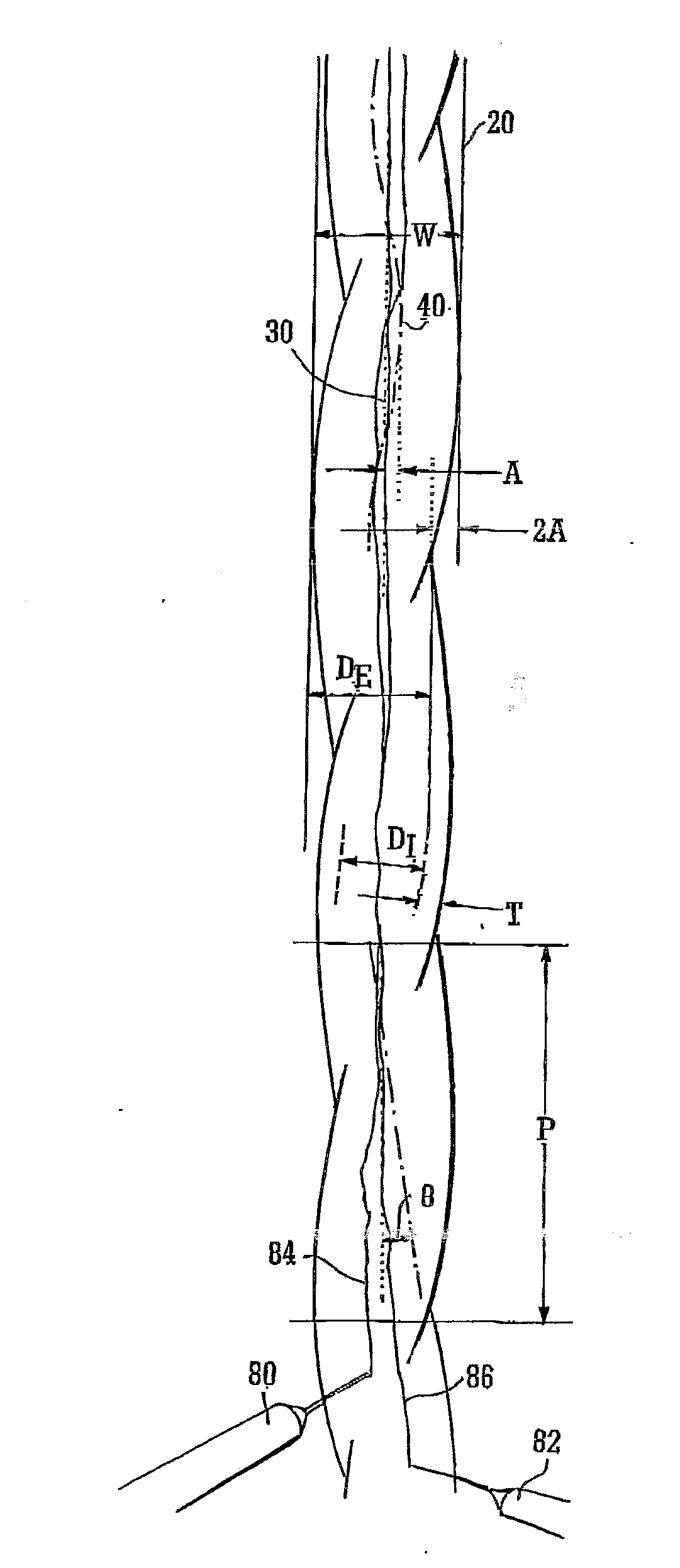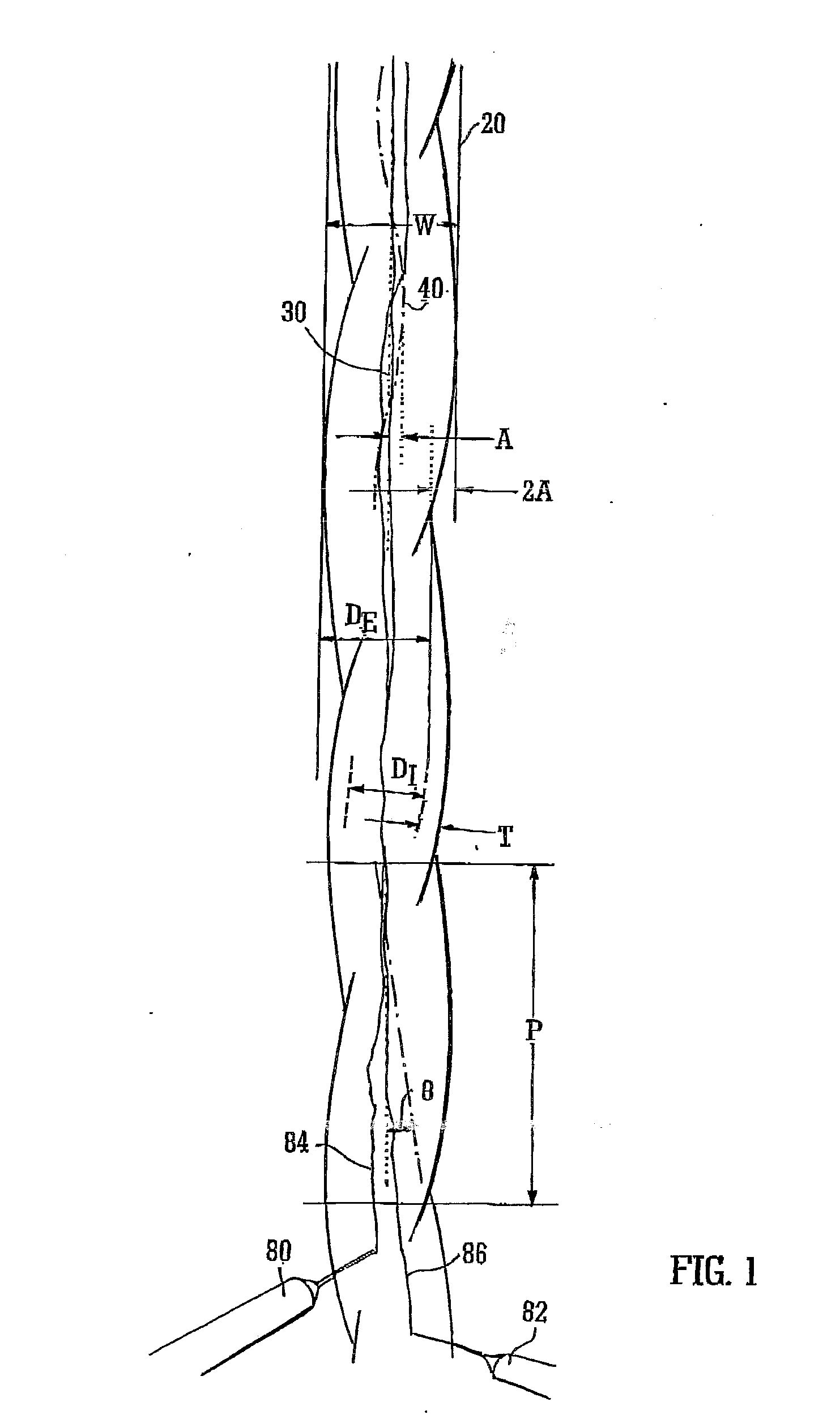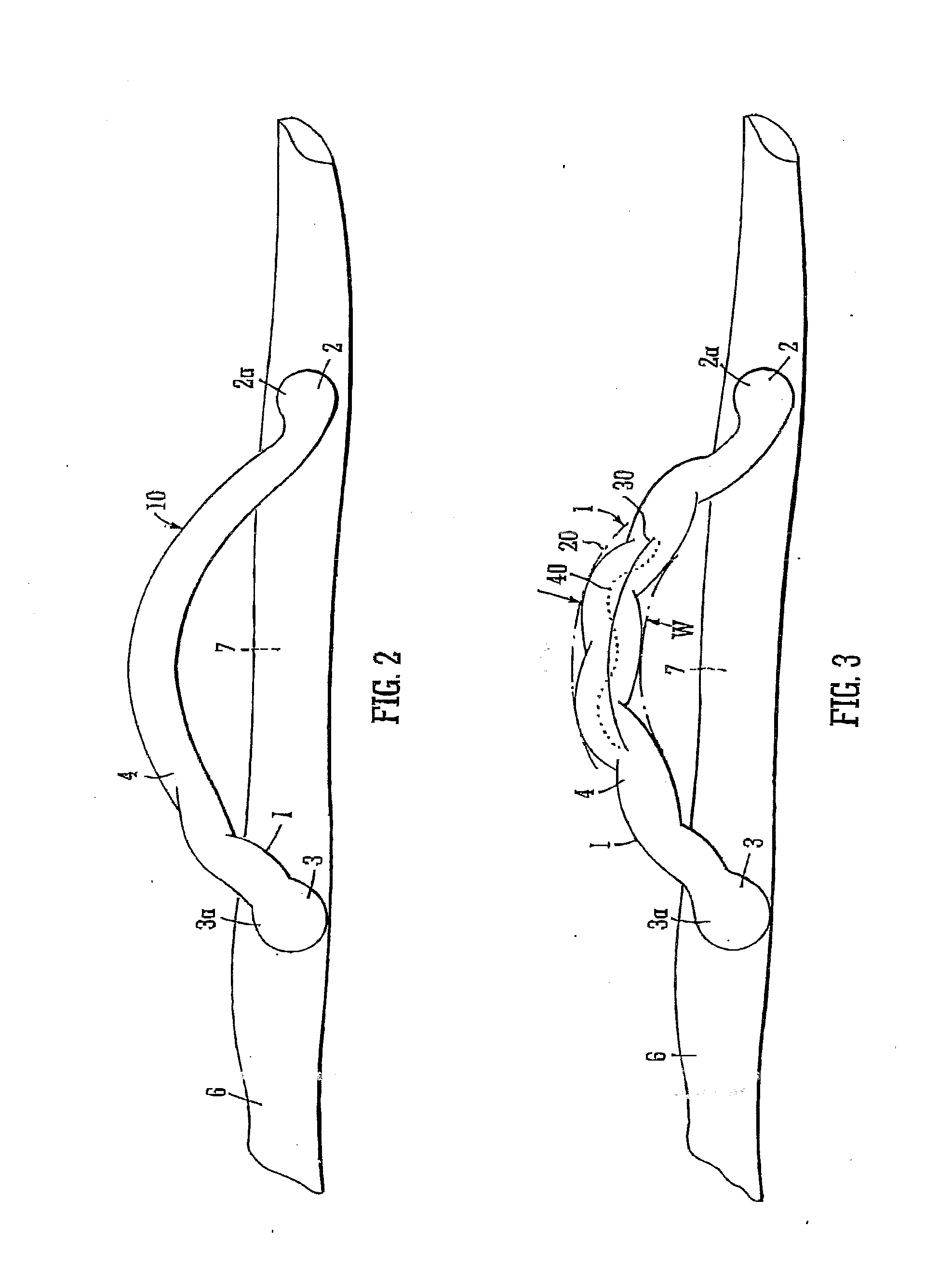Helical graft
a helical graft and stent technology, applied in the field of grafts, can solve the problems of increased flow resistance, increased flow resistance, and inability to reliably induce swirl flow across the entire cross-section of flow
- Summary
- Abstract
- Description
- Claims
- Application Information
AI Technical Summary
Benefits of technology
Problems solved by technology
Method used
Image
Examples
example 1
[0131]Experiments were carried out using polyvinyl chloride tubing with a circular cross-section. Referring to the parameters shown in FIG. 1 the tubing had an external diameter DE of 12 mm, an internal diameter DI of 8 mm and a wall thickness T of 2 mm. The tubing was coiled into a helix with a pitch P of 45 mm and a helix angle θ of 8°. The amplitude A was established by resting the tubing between two straight edges and measuring the space between the straight edges. The amplitude was determined by subtracting the external diameter DE from the swept width W:
2A=W−DE
So:
[0132]A=W-DE2
[0133]In this example the swept width W was 14 mm, so:
A=W-DE2=14-122=1mm
[0134]As discussed earlier, “relative amplitude” AR is defined as:
AR=ADr
[0135]In the case of this Example, therefore:
AR=ADr=18=0.125
[0136]Water was passed along the tube. In order to observe the flow characteristics, two needles 80 and 82 passing radially through the tube wall were used to inject visible dye into the flow. The inject...
example 2
[0138]The parameters for this Example were the same as in Example 1, except that the needles 80 and 82 were arranged to release the ink filaments 84 and 86 near to the wall of the tubing. FIG. 15 shows the results of two experiments with near-wall ink release, with Reynolds numbers RE of 500 and 250 respectively. It will be seen that in both cases the ink filaments follow the helical tubing geometry, indicating near-wall swirl. Furthermore, mixing of the ink filaments with the water is promoted.
[0139]It will be appreciated that this invention, in its first aspect, is concerned with values of relative amplitude AR less than or equal to 0.5, i.e. small relative amplitudes. In a straight tubing portion both the amplitude A and the relative amplitude AR equal zero, as there is no helix. Therefore, with values of relative amplitude AR approaching zero, the ability of the tubing portion to induce swirl will reduce. The lowest workable value of relative amplitude AR for any given situation...
PUM
| Property | Measurement | Unit |
|---|---|---|
| helix angle | aaaaa | aaaaa |
| helix angle | aaaaa | aaaaa |
| angle | aaaaa | aaaaa |
Abstract
Description
Claims
Application Information
 Login to View More
Login to View More - R&D
- Intellectual Property
- Life Sciences
- Materials
- Tech Scout
- Unparalleled Data Quality
- Higher Quality Content
- 60% Fewer Hallucinations
Browse by: Latest US Patents, China's latest patents, Technical Efficacy Thesaurus, Application Domain, Technology Topic, Popular Technical Reports.
© 2025 PatSnap. All rights reserved.Legal|Privacy policy|Modern Slavery Act Transparency Statement|Sitemap|About US| Contact US: help@patsnap.com



